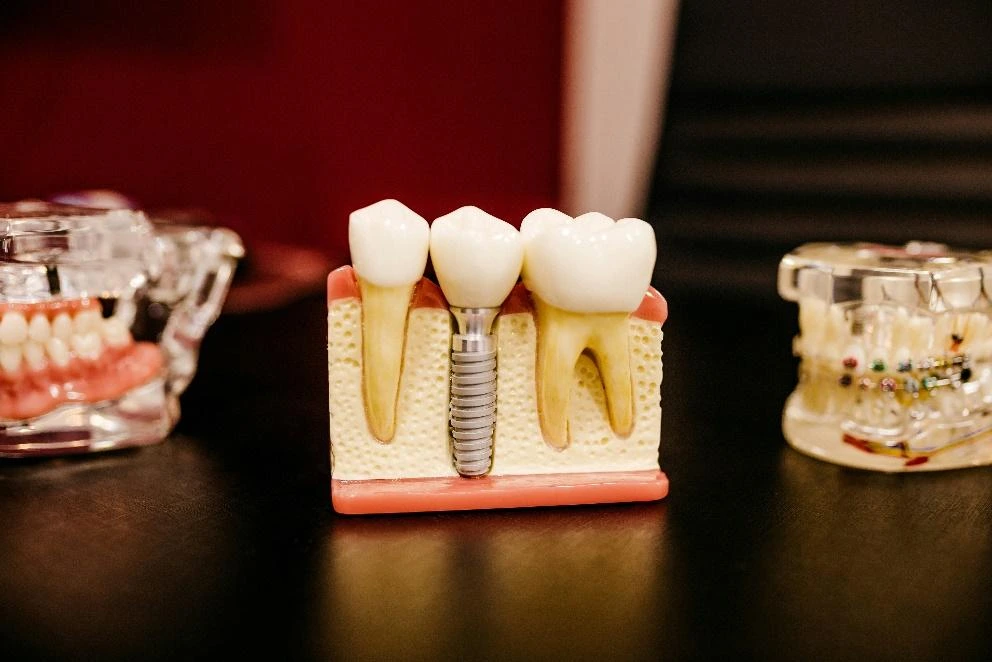Deciding how to replace missing teeth is a personal decision. Dental implants and bridges are the two most common options. While both aim to restore functionality and aesthetics, they differ in their approach, longevity, and overall benefits. Understanding these differences can help you make an informed choice. This article compares implants and bridges across key aspects to help you find the solution that works best.
Overview of Dental Implants
Before deciding, it helps to understand what dental implants and bridges are.
- Dental Implants
Implants are titanium posts surgically placed into the jawbone to act as artificial tooth roots. Once the implant integrates with the bone, a crown is added to provide the appearance of a natural tooth.
- Dental Bridges
A dental bridge involves creating a prosthetic tooth or teeth supported by the adjacent natural teeth. The teeth on either side of the gap are filed down to support crowns, which hold the bridge in place. Each solution replaces missing teeth.
Durability and Longevity
Dental implants are considered a long-term solution. With proper care, they can last 15 years or more and often require less maintenance over time. The integration of the implant with the jawbone gives it strength and makes it less prone to issues like decay.
Bridges, on the other hand, generally last 5 to 10 years before needing replacement. Since a bridge relies on the surrounding teeth for support, wear and tear on those teeth may affect its lifespan. Bridges do not prevent bone loss in the jaw, which can occur over time when missing teeth are not replaced with implants.
Procedure and Recovery Time
The dental implant process requires a multi-step approach and can take several months. After the implant is surgically placed, time is needed for it to fuse with the jawbone, a process called osseointegration. Once properly integrated, the crown is added. While the process is longer, the result tends to feel and function like a natural tooth.
Bridges are faster to complete as no surgical intervention is required. The process typically involves two visits. During the first visit, the supporting teeth are prepared, and impressions are taken. At the second visit, the bridge is fitted and secured. Recovery is faster, as this is a non-invasive option.
Key Considerations for Your Choice
When deciding between dental implants and bridges, it’s key to weigh factors like cost, oral health needs, and personal preferences.
Here’s a quick comparison:
- Cost
- Dental implants typically have a higher upfront cost but last longer, making them a solid investment.
- Bridges usually cost less initially, but they may need more frequent replacements, increasing long-term expenses. a
- Oral Health Impact
- Implants help preserve jawbone health by stimulating the bone, preventing bone loss.
- Bridges do not support the jawbone and rely on altering healthy adjacent teeth for placement.
- Aesthetics
- Both implants and bridges can look natural, but implants have a realistic feel and function closest to natural teeth.
Which Is Right for You?
Choosing between dental implants and bridges depends on your unique needs, priorities, and oral health condition. If you value a durable, long-term solution and don’t mind a more extensive procedure, implants may be ideal. If you need a quicker, more cost-effective option, a dental bridge could suit you better. It’s always best to consult an experienced dental professional who can assess your situation and guide you toward the most suitable treatment option.
- What Is Medicaid Exclusion For Funeral Plans – Benefits of Medicaid Funeral Exclusions!
- Banner Desert Medical Center – Trusted Care in Arizona!
- Why Cranberry Femine Health – The Ultimate Natural Wellness Guide for Women!
- What Is The Best Peptide For Bone Health – A Comprehensive Overview!
- Why Is Signify Health Calling Me – Understanding the Purpose Behind the Call!

Leave a Reply